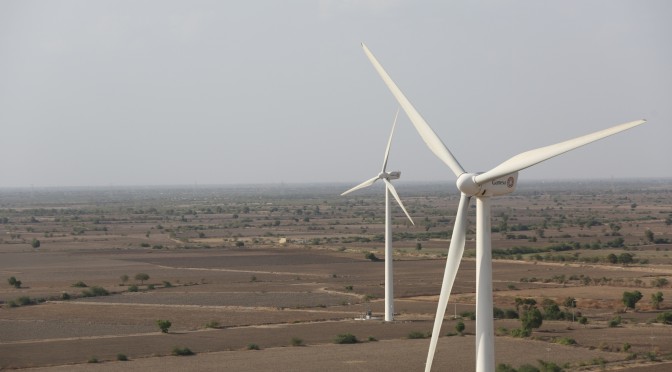India would have installed 175 GW of renewable energy capacity by 2022, says secretary, Ministry of New and Renewable Energy.

India plans to set up 500 gigawatts (GW) of renewable energy capacity by 2030. This announcement was made by Anand Kumar, secretary, Ministry of New and Renewable Energy on Tuesday at the 17th meeting of the International Renewables Energy Agency (IRENA) council in Abu Dhabi.
The significant announcement comes in the backdrop of the National Democratic Alliance (NDA) government running the world’s largest renewable energy programme and plans to achieve 175 GW of renewable energy capacity by 2022 as part of its climate commitments. India has an installed renewable energy capacity of around 80 GW.
“India would have installed 175 GW of RE (renewable energy) capacity by 2022 without taking into account large hydro and 225 GW including large hydro. By 2030 India plans to establish 500 GW of renewable energy capacity,” Anand Kumar said in a statement issued by the MNRE.
This comes in the backdrop of the NDA government’s agenda of providing reliable, sustainable and affordable electricity to the masses in its second term and focusing on changing the energy mix towards green energy sources. Also, as part of the new hydro policy, the large hydropower projects have been declared as a renewable energy source, thereby making them a part of the renewable purchase obligation, which requires power discoms to purchase a fixed amount of renewable energy to cut dependence on fossil fuels.
“In his speech at IRENA meet, Shri Kumar stressed that fighting against climate change and adoption of renewable energy is a matter of faith and commitment for India. He also shared efforts being made by India for de- dieselisation of farm sector,” the statement added.
The interest in India’s emerging green economy continues unabated. Earlier this month, sovereign wealth funds GIC Holdings Pte Ltd and Abu Dhabi Investment Authority agreed to invest $495 million in Greenko Energy Holdings, in one of the largest funding rounds by an Indian clean energy producer. Also, oil giants such as Russia’s Rosneft, Norway’s Statoil ASA, France’s Total SA and Royal Dutch Shell Plc are looking to diversify and invest in India’s green economy as the conventional hydrocarbon space undergoes technological disruption. For example, Malaysia’s state-run oil and gas company, Petroliam Nasional Bhd or Petronas has acquired Amplus Energy Solutions Pvt. Ltd, one of India’s largest rooftop solar power producers. have also been exploring opportunities in India’s clean energy space.
A 2 April IRENA report said that 171 GW of renewable energy was added in 2018, resulting in 2,351 GW or a third of global power generation capacity being fuelled by renewable sources. Interestingly, Asia accounted for 61% of new capacity in 2018.
India has witnessed a record low solar tariffs of ?2.44 per unit. India’s wind power tariff also fell to a record low of ?2.64 per unit. Of the targeted 175 GW of clean energy capacity by 2022, 100 GW is to come from solar (PV and concentrated solar power) projects. Of this, 60 GW will be from ground-mounted, grid-connected projects, and 40 GW is to come from solar rooftop projects. Wind energy projects are to contribute 60 GW.
Getting this quantum of solar energy and wind power on the grid would require forecasting the generation and setting up of renewable energy management centres (REMC). To put this into play, the government’s 100-day plan has proposed setting up eight such REMCs in wind and solar rich states such as Tamil Nadu, Andhra Pradesh, Karnataka, Gujarat, Maharashtra and Madhya Pradesh.


